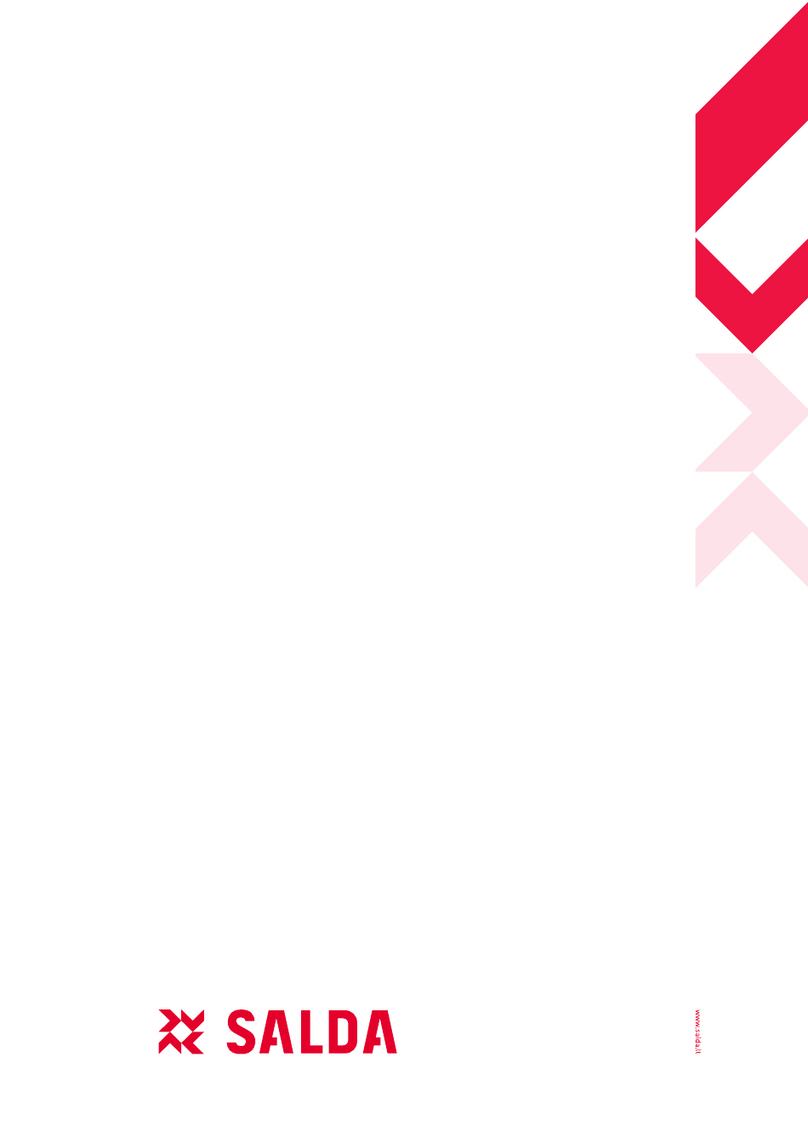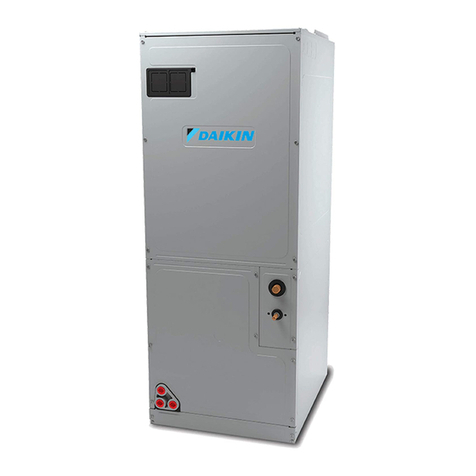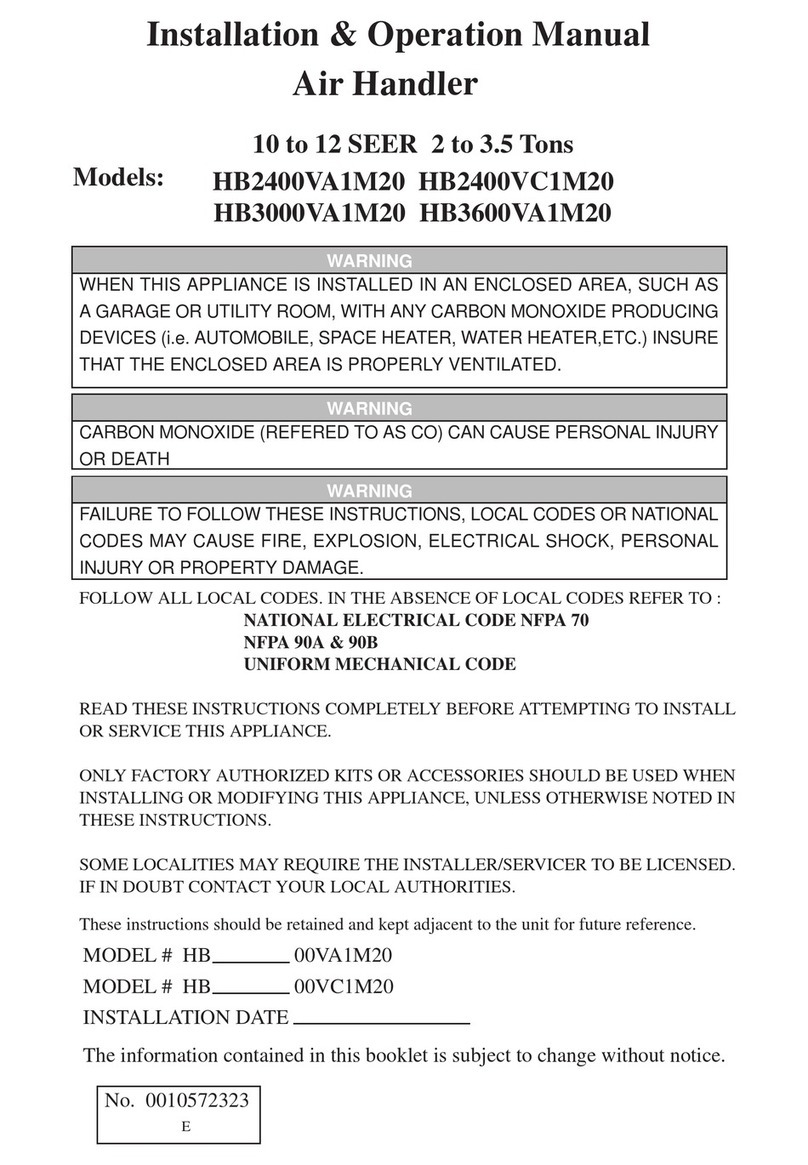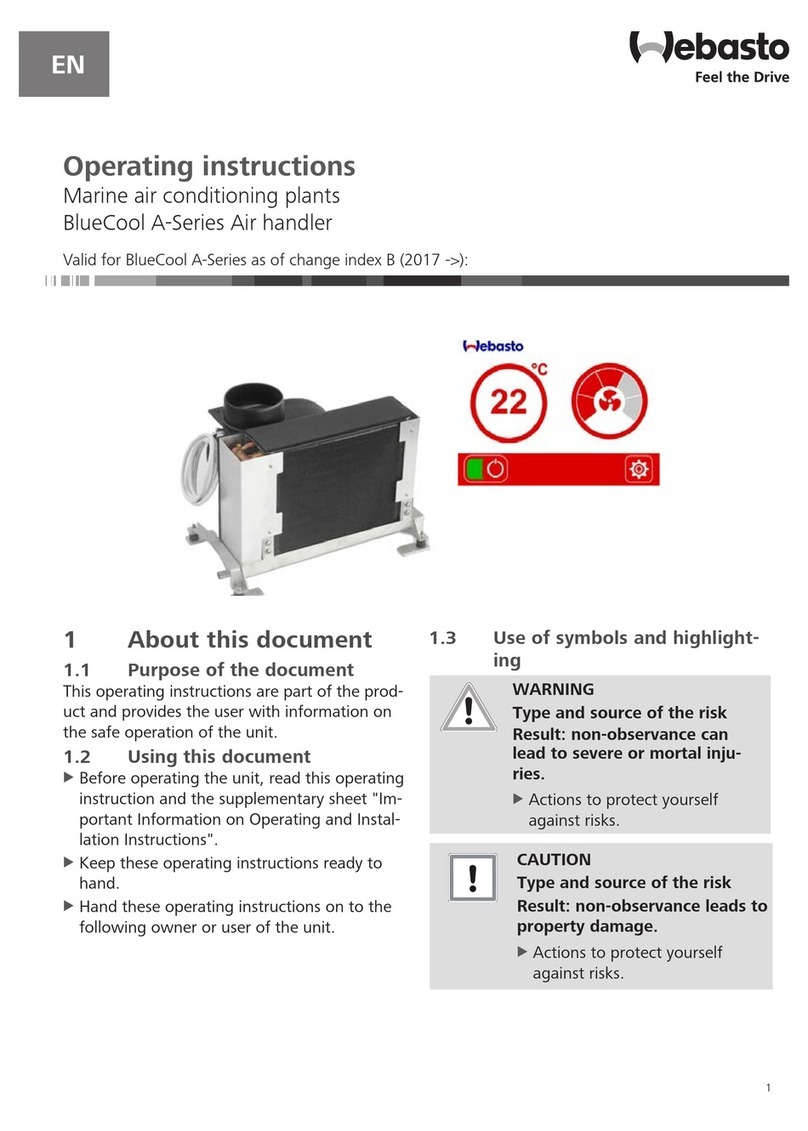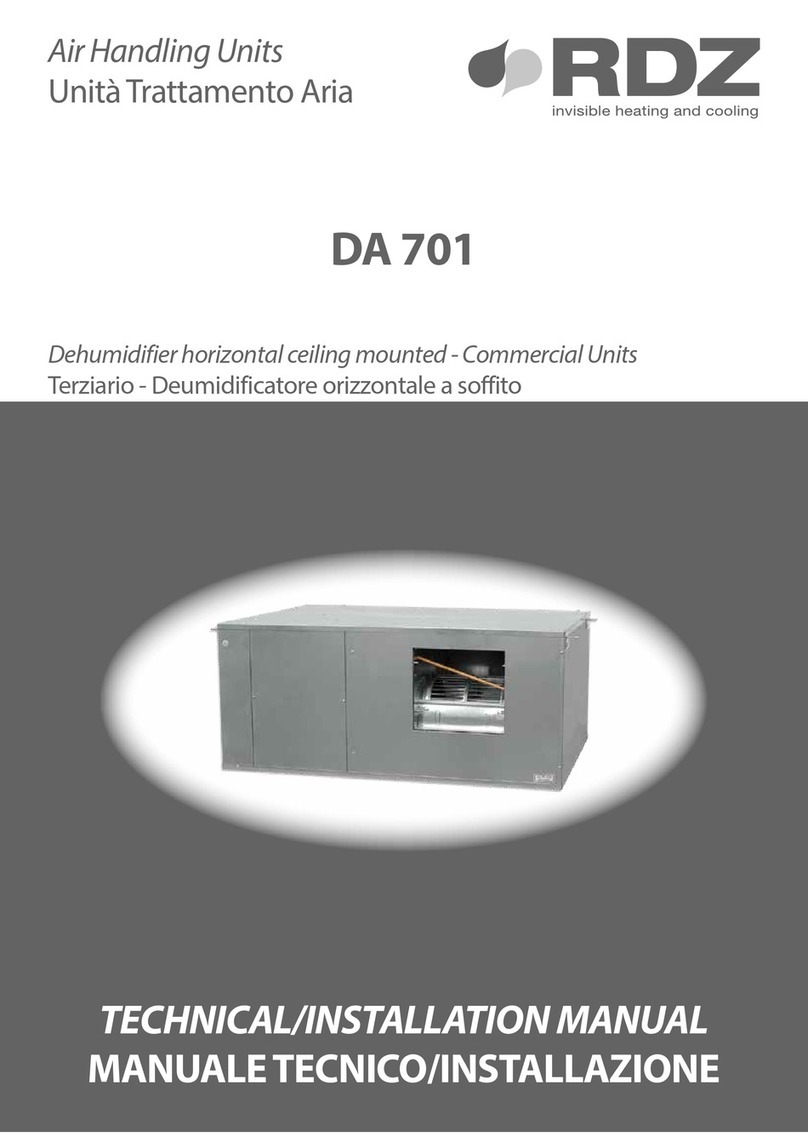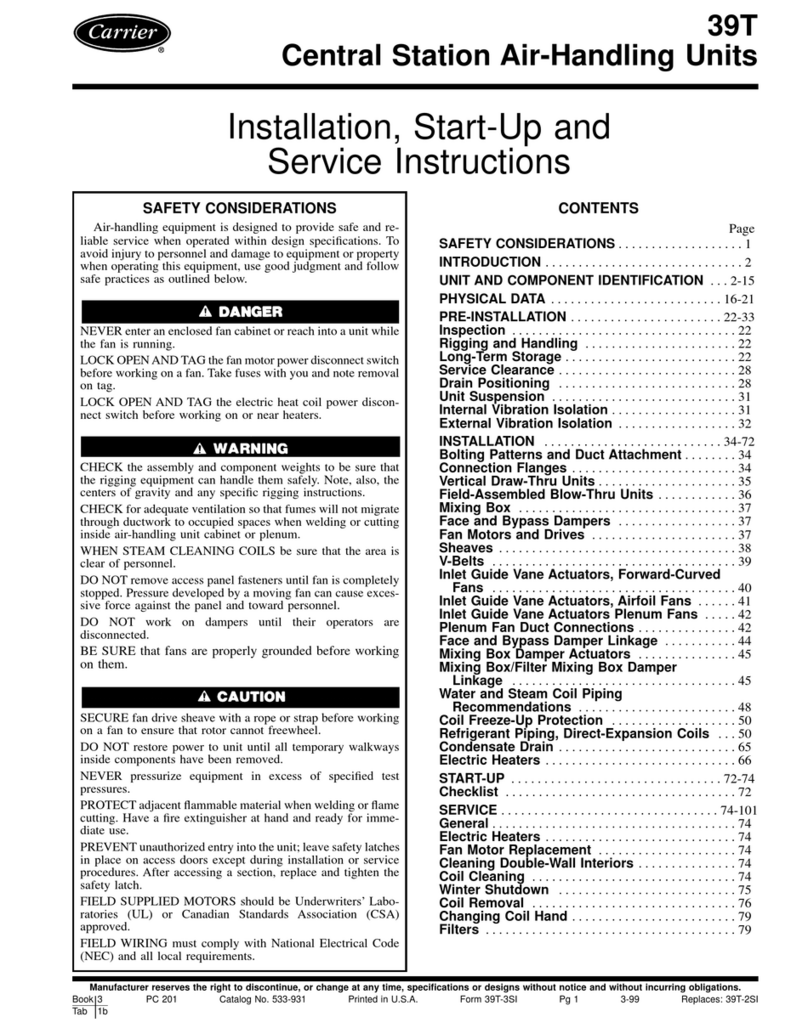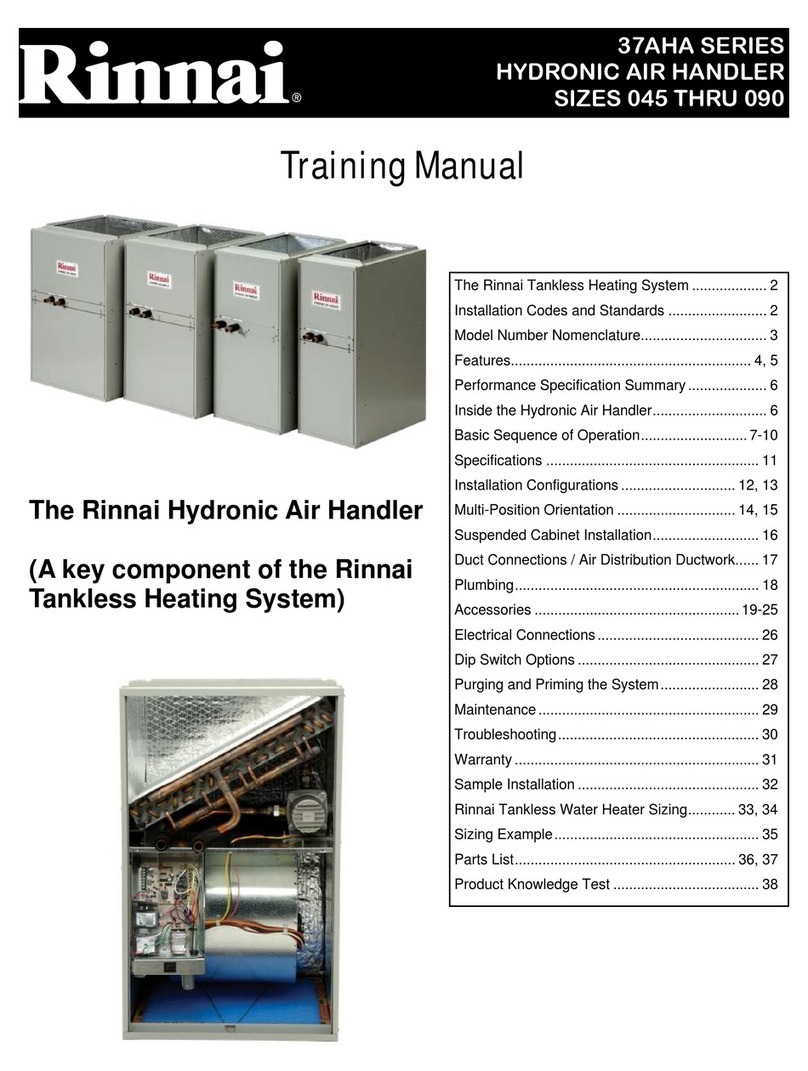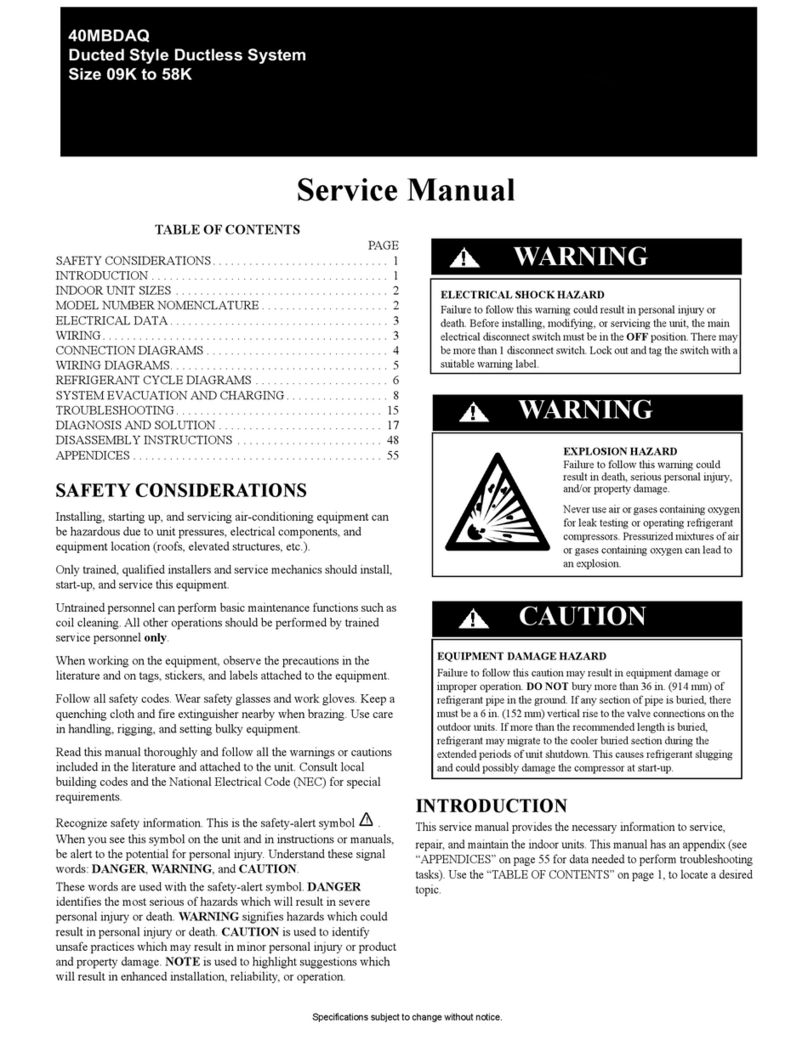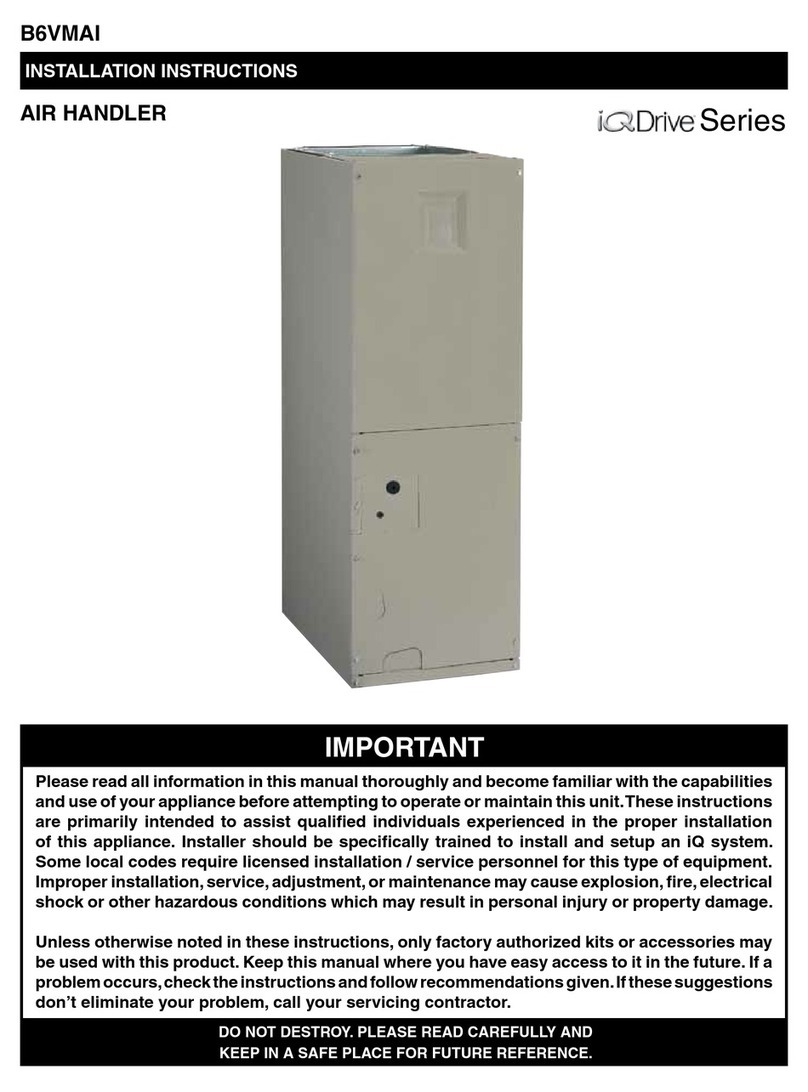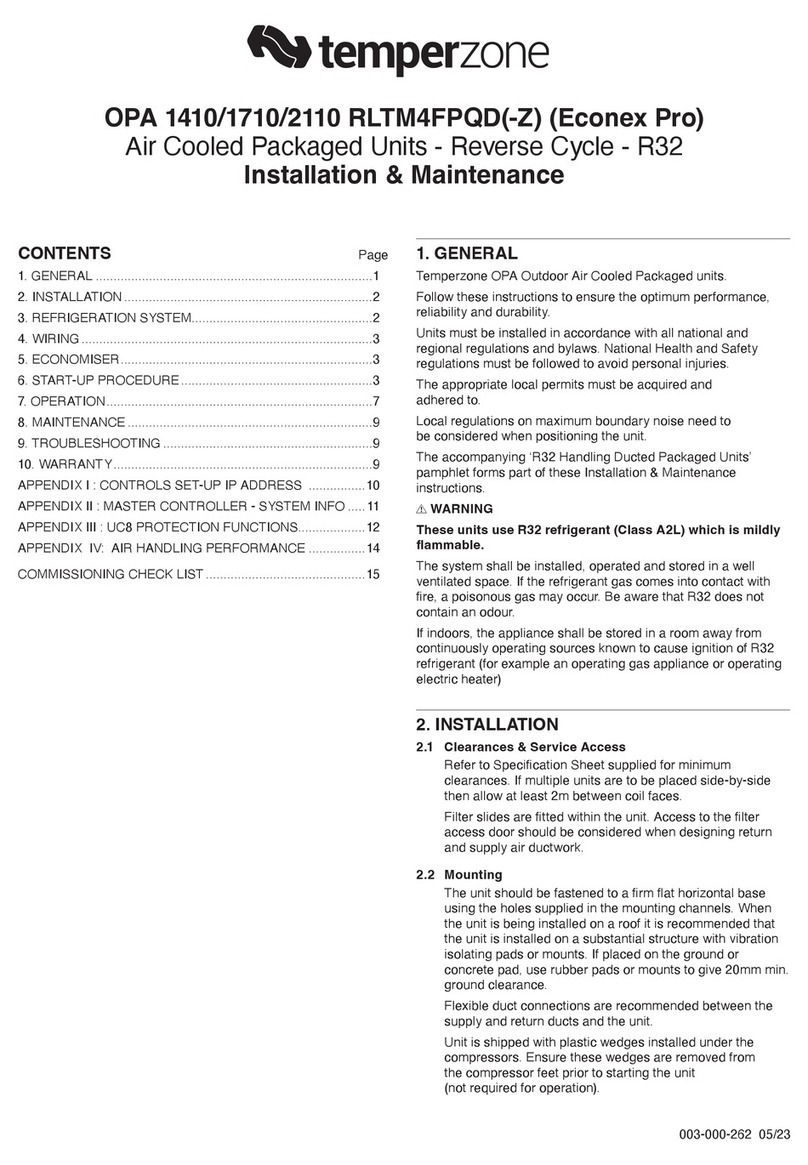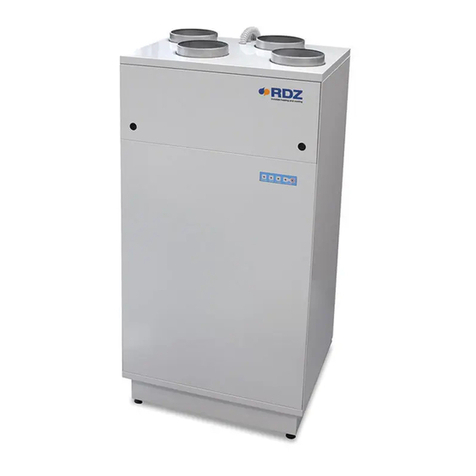4 Canadian Air Handler Installation and Operation Manual
Indicates an imminently hazardous
situation which, if not avoided, will result
in personal injury or death.
Indicates a potentially hazardous situation
which, if not avoided, could result in personal
injury or death.
Indicates a potentially hazardous situation
which, if not avoided, could result in minor
or moderate injury. It may also be used to
alert against unsafe practices.
DANGER
WARNING
This manual contains the following important
safety symbols. Always read and obey all safety
messages.
Safety alert symbol. Alerts you to
potential hazards that can kill or
hurt you and others.
CAUTION
The following precautions apply to the installer
and consumer. Read and follow all instructions in
this section.
• Before any work is undertaken, it is
imperative to observe all precautions as
stated in this manual.
• Wear safety glasses and work gloves.
Before installing or servicing the air handler,
turn off the power to unit. There may be more
than one disconnect switch. Electrical shock
can cause personal injury or death.
WARNING
• Suitable fire extinguishing equipment should
be immediately available in the work area
and be maintained in a state of readiness for
instant use.
• Do not use this air handler if any part has
been under water. Immediately call a
licensed professional to inspect the air
handler and replace any part that has been
under water.
• Do not use substitute materials. Use only
parts certified for the air handler.
• Do not use an extension cord or adapter plug
with this air handler.
• Any alteration to the air handler can be
dangerous and will void the warranty.
• This air handler must be installed indoors.
• Improper installation, modification, service,
maintenance or use of the air handler can
cause electrical shock, burns or other
conditions which may cause personal injury
or property damage.
• It is recommended that a trained and
qualified professional who has attended a
Rinnai installation training class complete
your installation.
• Read these installation instructions carefully
and adhere to all warning and caution
statements. Consult local building codes,
Occupational Safety and Health
Administration (OSHA), and National
Electrical Code (NEC) for special
requirements.

